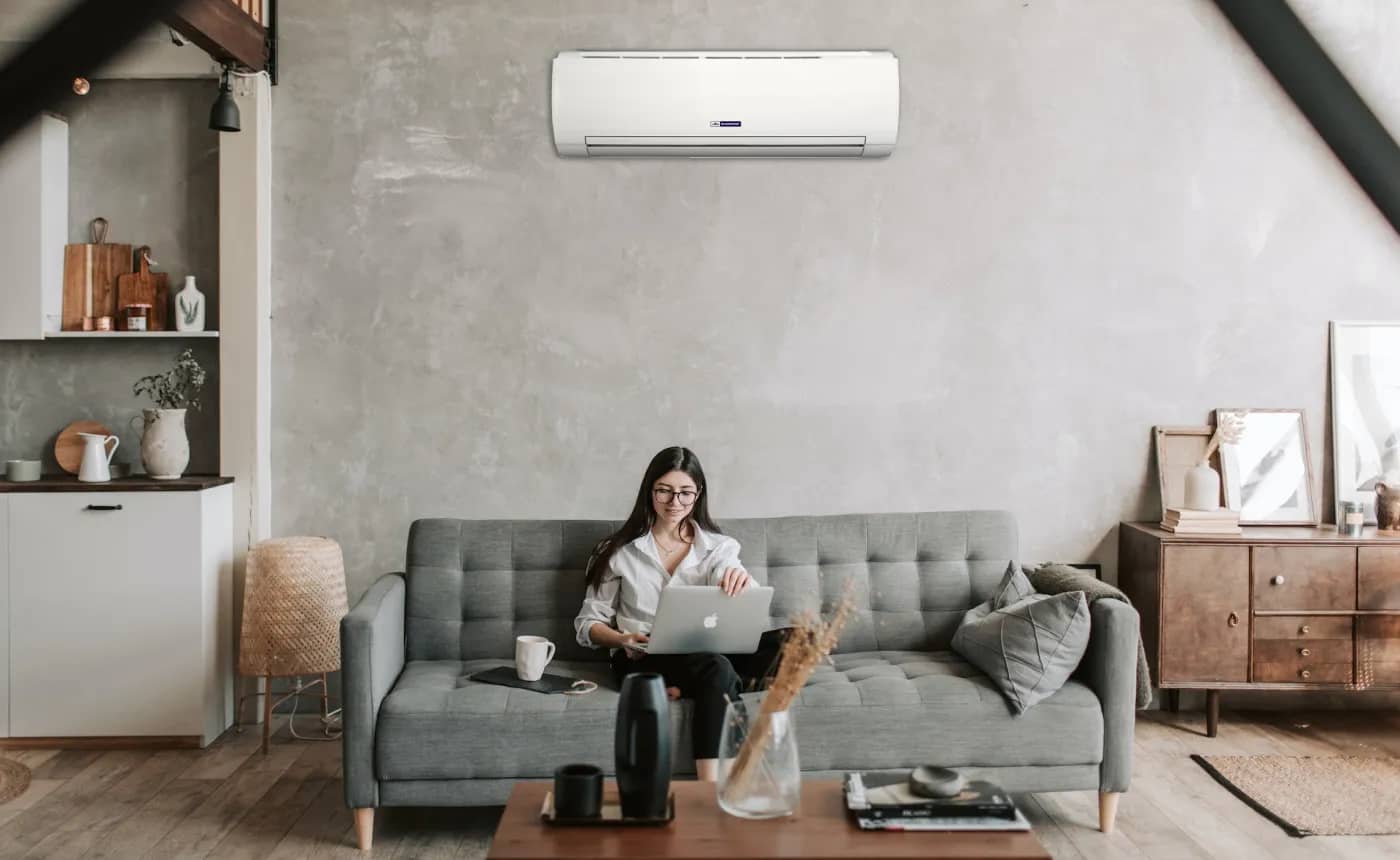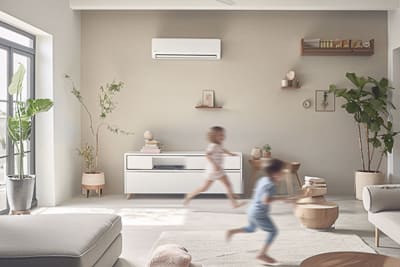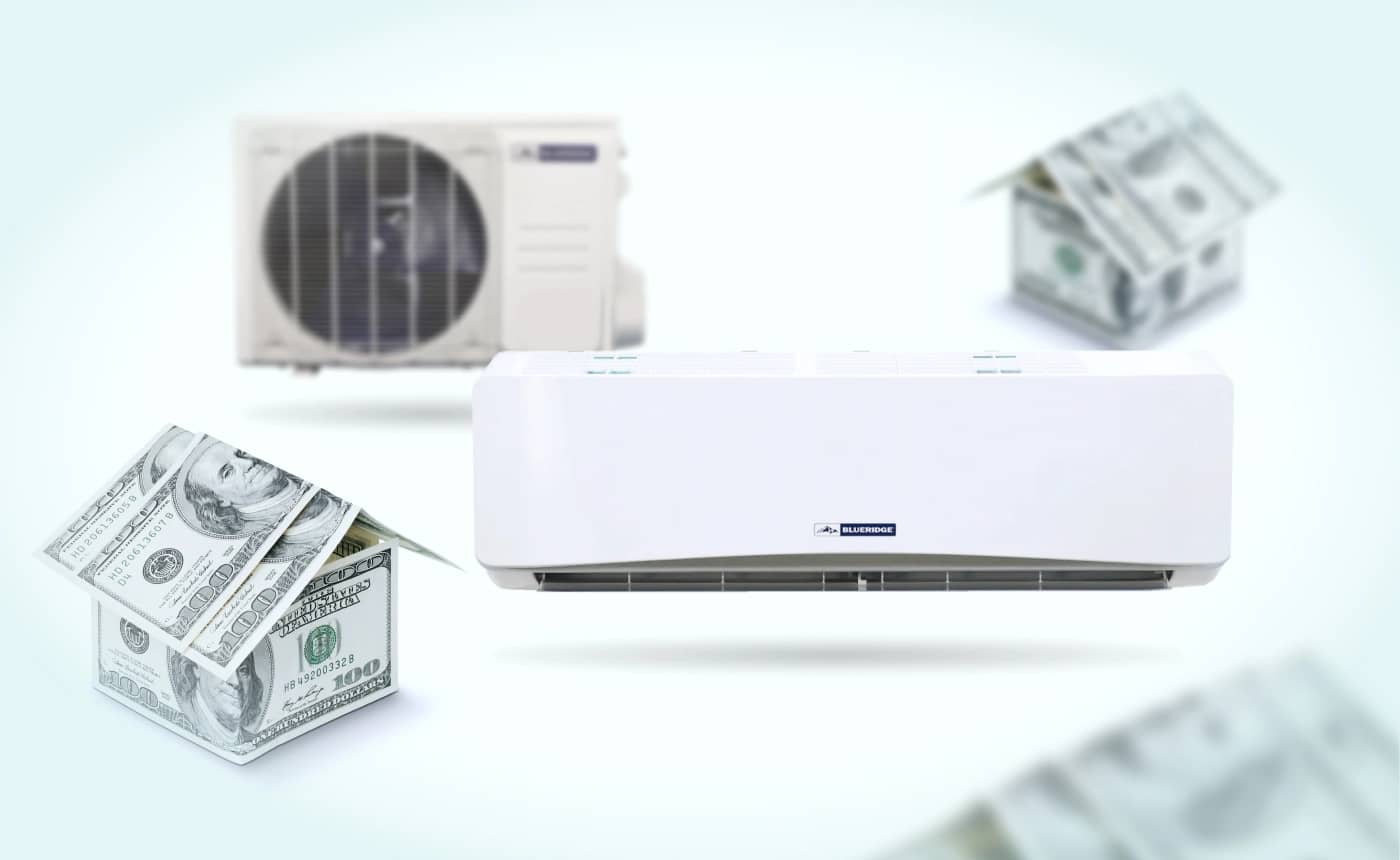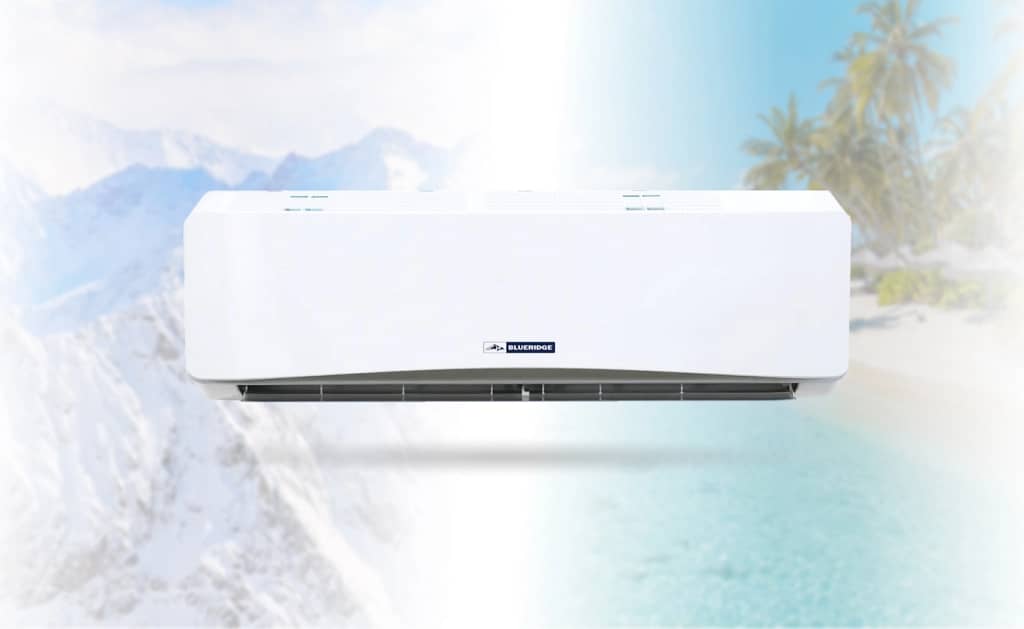
Every month, you look at your electric bill and think, “There’s got to be a way we can get this lower.”
At least once a week, you get into a squabble with someone in your house over where to set the thermostat.
And, at least once a day, you walk through your house and wonder why you need a sweater in some rooms while others make you want to strip down to the bare necessities to stay comfortable.
We’ve all been there.
But you no longer have to stay there.
KEY TAKEAWAYS
- Central forced air systems have been the standard way to heat and cool homes and offices for many decades, but mini-split systems are growing in popularity.
- A mini split heat pump system is the most advanced type of HVAC technology available today and offers unparalleled efficiency and versatility.
- Choosing a mini-split system doesn’t have to be hard if you know what to look for and what you need.
Mini-split heat pumps are quickly replacing traditional central air systems, which have been the go-to heating and cooling choice for decades.
The popularity of mini split heat pumps can be attributed to several things, from their easy installation process and reduced energy consumption to their advanced heat pump technology and zoning capability that isn’t possible with traditional central air systems.
And while all this sounds impressive, one question still remains.
Is a ductless mini split heat pump system right for your needs?
Let’s find out!

What is a Mini Split Heat Pump System?
Before determining if a ductless mini-split will meet your unique needs, let’s ensure you understand exactly what these systems are.

A ductless mini split AC system is modeled on a traditional split system but offers many advantages that make it the most cost-effective and environmentally friendly way to heat and cool a space.
Put simply, mini-split systems combine the functions of both heating and cooling systems.
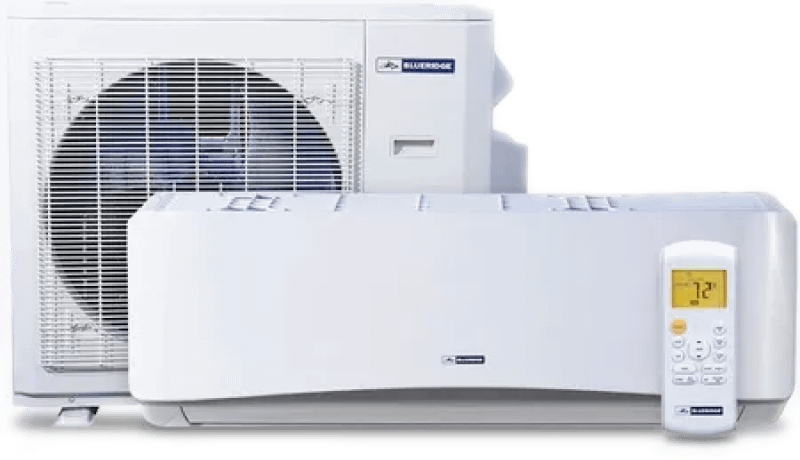
The “mini” in mini-split system refers to the system’s compact size and the fact that it doesn’t need ductwork, making both the indoor and outdoor units space-saving and flexible alternatives to traditional central forced air systems.
How Does it Work?
Ductless mini-split systems comprise two main components: an outdoor unit (the condenser or heat pump) and one or more indoor units (air handlers.)
These components connect with wiring and thin tubes of cooling refrigerant. The refrigerant coolant is responsible for both cooling and heating.
The design of the mini split heat pump is inherently versatile, allowing easy installation in many spaces.
The indoor air handlers can be mounted on walls, suspended from ceilings, or even installed in concealed locations, making them inconspicuous and seamless additions to any room.
This installation flexibility, combined with the system’s energy efficiency, has made mini split heat pumps popular for retrofits, room additions, and spaces where traditional ducted systems may not be practical.
Unlike a conventional HVAC setup, a mini split heat pump operates without requiring a duct system.
What is a Traditional HVAC Duct System?
Traditional central forced air systems use ductwork to distribute conditioned air throughout the building or home.
The duct system delivers heated or cooled air from the central HVAC unit to various rooms and spaces, ensuring consistent indoor comfort.

“Ductwork” refers to a network of channels or passages used in traditional heating and cooling systems to distribute conditioned air throughout a building or home.
The ductwork is typically fabricated from sheet metal–typically galvanized steel or aluminum–or fiberglass.
Ducts carry heated or cooled air from a central HVAC unit to various rooms or areas in buildings and homes of all sizes.
In a central forced air HVAC system, the duct system plays a crucial role in delivering conditioned air to different spaces in the building.
How Does it Work?
A ducted system begins by drawing air into the outdoor unit, where it is heated or cooled. The air is then pushed through the ductwork by a fan.
The ducted system then distributes the conditioned air through vents or registers in walls, ceilings, or floors throughout the home or building.
The hope with a ducted system is to give even air distribution to all rooms while maintaining a comfortable indoor temperature.

What are the Biggest Benefits of Mini Split Heat Pumps?
Mini split heat pumps offer compelling benefits that set them apart from traditional HVAC systems.
These advantages have made them increasingly popular among homeowners and businesses looking to optimize their heating and cooling solutions while enhancing their comfort and efficiency.

1. Energy Efficiency
One of the most significant advantages of mini split heat pumps is their exceptional energy efficiency.
By utilizing inverter technology, most mini-split systems adjust their compressor speed to match the heating or cooling needs of the space accurately. This results in minimal energy wastage, as the system operates at variable speeds rather than constantly turning on and off.
Additionally, the absence of ductwork ensures no energy losses through leaks or poorly insulated ducts, further improving overall efficiency and reducing utility bills.
(One thing to note is that ductless mini split systems are, by nature, more energy efficient than traditional central air units, but not all are ENERGY STAR® certified. You will want to do your homework before choosing the right mini split outdoor and indoor units for your office or home.)

2. Zoning Capability:
Mini split heat pumps offer precise zoning capability, allowing users to create individual climate zones in different rooms or areas.
Each indoor unit operates independently, enabling occupants to customize the temperature according to their preferences.
This can be a huge game changer for home and business owners who tire of having to cool or heat huge areas for no purpose and, thus, pay huge electric and gas bills because of it!
By conditioning only the spaces in use, zoning eliminates energy waste and ensures personalized comfort, making it an ideal solution for households or offices with varying thermal needs.

3. Flexibility in Installation:
The ductless design of mini split heat pumps makes them remarkably easy to install in a wide range of spaces.
Without the need for ductwork (or installing distribution ductwork), the mini split system installation process is less invasive, less time-consuming, and less disruptive to the property and the people who occupy it.
Every compact indoor air handling unit can be mounted on walls or installed into ceilings, providing flexibility that will suit many different architectural styles and interior design preferences.

4. Enhanced Indoor Air Quality:
Traditional HVAC ductwork can accumulate dust and allergens and circulate them throughout the living or working space. However, a mini-split system will substantially improve a home or office’s air quality.
With ductless mini splits, there are no ducts to harbor contaminants, resulting in cleaner and healthier indoor air.
Additionally, some models come with advanced filtration systems that trap dust, pollen, and other pollutants, providing further air purification benefits.

5. Quiet Operation:
Mini split heat pumps operate more discreetly than standard central air systems, ensuring a peaceful and tranquil indoor environment.
Because the condenser is located outside, users can enjoy the comfort their indoor units afford them without disturbing sounds. This quietness is particularly beneficial for bedrooms, offices, or spaces where silence is valued.
How Do I Know if a Ductless Mini Split Heat Pump System is Right for Me?
Knowing the difference between a traditional HVAC central air system and a mini split heat pump system is one thing…
Knowing which one is right for you is another.
Choosing the ideal heating and cooling system for your home or business is a significant decision for most of us, and understanding the factors that make each one suitable for your needs is crucial.
If you’re still wondering whether a ductless mini split heat pump fits your specific requirements, consider the following indicators to help guide your decision-making process.
You have limited ductwork options:
If your property lacks existing ductwork or installing ducts is impractical or costly, a ductless mini split heat pump system offers a viable alternative. Its ductless design allows for easy installation without major renovations, making it an attractive option for older homes, room additions, or spaces where ductwork is not feasible.
You have many different zoning needs:
If you desire personalized comfort with individual temperature control in different areas of your home or office, a ductless mini split system’s zoning capabilities are a decisive advantage. It allows you to create independent climate zones, providing enhanced comfort and energy efficiency by conditioning only the spaces that are in use. You can choose the number of zones for your space: single-zone, 2-zone mini-split systems, or more.
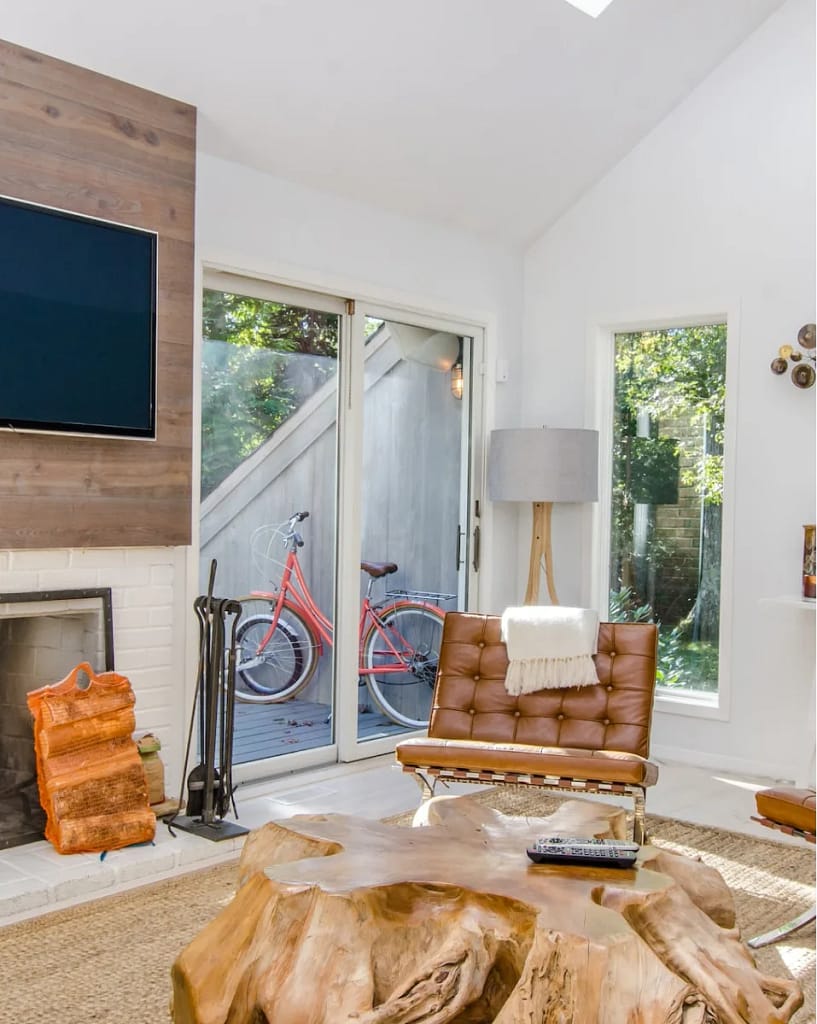
You are interested in the most energy-efficient option:
A ductless mini-split heat pump can be an excellent choice to reduce energy consumption and lower utility bills. With its inverter technology, variable-speed operation, and absence of duct losses, this system maximizes energy efficiency, making it an environmentally friendly and cost-effective heating and cooling option.
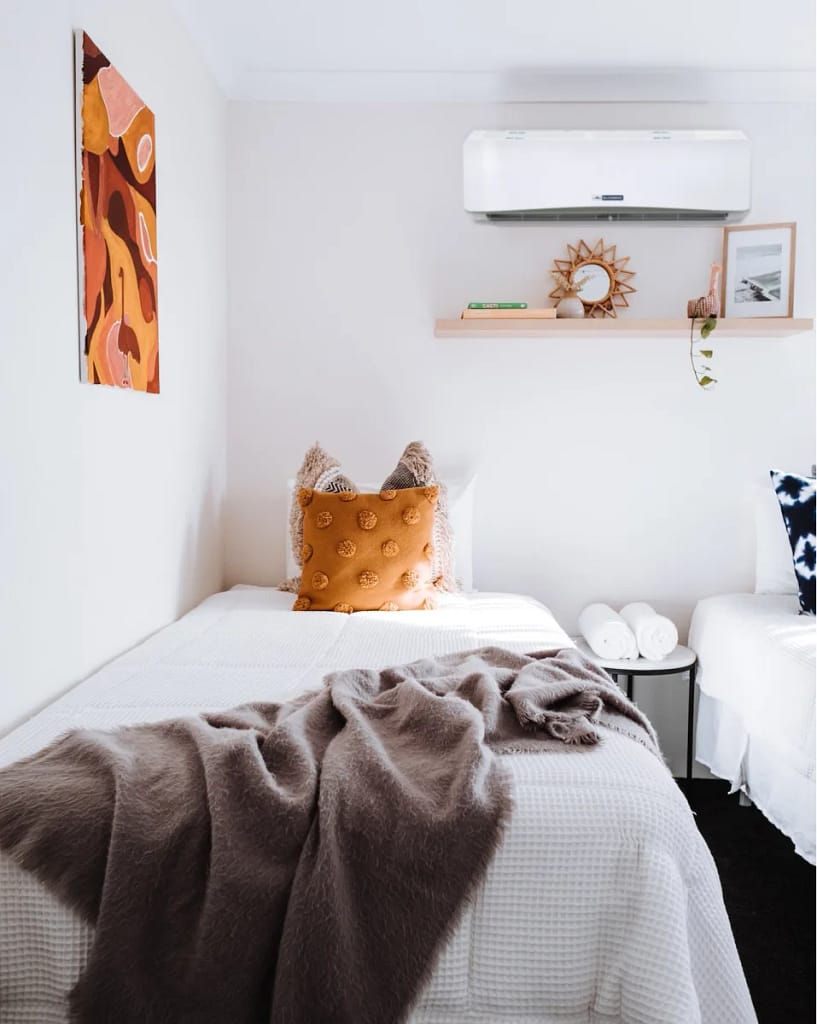
You want improved indoor air quality:
If you or your family members have allergies or respiratory sensitivities, a ductless mini-split system can improve indoor air quality. Without ductwork to collect and circulate dust and allergens, the system provides cleaner and healthier air, and some models offer advanced filtration options for further air purification.
You want an indoor and outdoor unit that’s quieter than most:
If you value a quiet and peaceful indoor environment, a ductless mini split heat pump delivers just that. With its noiseless indoor operation and the noisier components placed outside, the system ensures minimal disturbances, making it particularly suitable for bedrooms, living rooms, and spaces where tranquility is essential.
You like having flexibility in your heating and cooling system’s design:
If you prefer a sleek and unobtrusive HVAC solution that seamlessly blends with your interior design, a ductless mini-split system’s compact and stylish indoor units offer excellent design flexibility. They can be mounted on walls, suspended from ceilings, or even concealed for a polished appearance.

I’m Interested in Purchasing a Mini Split Heat Pump for My Space. Where Do I Start?
As you can see, some of the most significant benefits of mini split heat pumps are their ability to combine energy efficiency, zoning capabilities, installation flexibility, enhanced indoor air quality, and quiet operation.
But you still need to figure out where to start.
Turn to Alpine Home Air Products, America’s leading heating and air cooling store since 2002.

At Alpine, we have skilled experts ready to help you sort out your cooling and heating system needs.
From whether or not you need an outdoor unit that can serve multiple indoor units to whether or not you can install the entire mini-split system yourself, we can help you navigate through all the questions you may have regarding your new cooling and heating systems.
Call, email, or live chat with one of our knowledgeable team members. We can’t wait for you to contact us and begin your journey toward a better way to cool and heat your favorite spaces!
